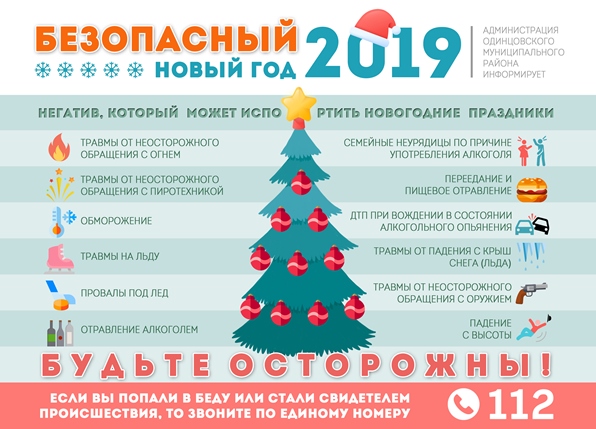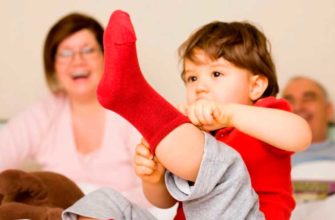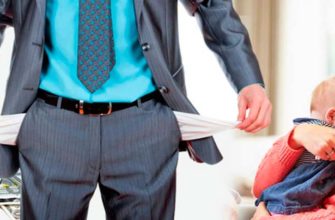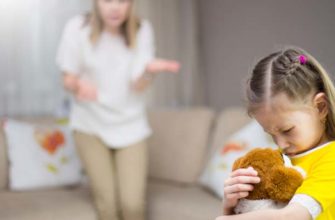
Rules of conduct in public places during the Christmas trees and in other crowded places
- If you went to the New Year’s performance with your parents, in no case do not go far from them, because with a large crowd of people it is easy to get lost.
- In places of mass New Year's festivities, try to stay away from the crowd, in order to avoid personal injury.
It follows:
- Obey the legal warnings and requirements of the administration, the police and other persons responsible for maintaining order, fire safety.
- Be respectful to participants in mass events, attendants, and officials responsible for maintaining public order and safety during mass events.
- Avoid actions that could create a danger to others and lead to the creation of an extreme situation.
- To carry out an organized exit from premises and structures at the end of events.
- Upon receipt of information on evacuation, act in accordance with the instructions of the administration and law enforcement officials responsible for maintaining law and order, being calm and not creating panic.
Fire safety rules during the New Year holidays
During the New Year holidays, in addition to the usual fire safety rules, you should follow a few simple rules that will allow you to get only positive emotions from the weekend:
- Do not decorate the Christmas tree with cloth and plastic toys.
- Do not cover the Christmas tree stand with cotton.
- The tree should be illuminated only with industrial electric garlands.
- Indoors, it is not allowed to light sparklers, use crackers and wax candles. Remember, open fire is always dangerous!
- You should not use pyrotechnics if you do not understand how to use it, and the instructions are not attached, or it is written in a language you do not understand.
- It is impossible to repair and reuse non-triggered pyrotechnics.
- It is strictly forbidden to use home-made pyrotechnic devices.
Prohibited:
- arrange “fireworks” closer than 30 meters from residential buildings and flammable objects, under low canopies and tree crowns.
- carry pyrotechnics in pockets.
- keep the wick near the face while igniting.
- use pyrotechnics in strong winds.
- send rockets and fireworks to people.
- throw firecrackers under your feet.
- bend low over lighted fireworks.
- be closer than 15 meters from lit pyrotechnic products.
Sparklers, fireworks, candles - all these indispensable attributes of the New Year holiday can bring not only joy, but also trouble. This is especially true of Christmas trees in schools, kindergartens, medical and other institutions. And so that the holiday does not lead to tragedy, it is enough to follow simple rules.
The room where mass New Year's events are held should be located on the first or second floor (no higher) and have two exits. In an accessible place, you need to prepare the primary fire extinguishing means (fire extinguishers, nightmare, etc.).
The Christmas tree is placed on a stable stand, away from the exits and heating devices so that the branches do not touch the curtains, curtains and other combustible materials and objects. To decorate it, it is allowed to use only factory-made electric garlands.
Carnival costumes, toys made of gauze and cotton wool are treated with a flame retardant (dissolve 150 g of soda ash or baking soda and 50 g of starch in a liter of warm water, soak the costume in it for 10 minutes and dry).
It is forbidden to use bertoletova salt, magnesium and other combustible materials for making costumes and Christmas tree decorations, to light candles, sparklers and fireworks during the holiday.
Dry, long-standing Christmas trees or made of synthetic materials are especially fire hazardous. In addition, artificial Christmas trees during burning emit toxic substances harmful to human health.
The New Year's holiday is held only under the supervision of adults, and in crowded places - in the presence of officers on duty from the administration and persons responsible for maintaining fire safety.
When arranging Christmas trees in schools, children's, medical and other institutions, their leaders are responsible for fire safety, and all these organizations must obtain special written permission from the state fire supervision agency in advance.
It is strictly forbidden to use products flying up close to residential buildings and other buildings: their flight path is unpredictable, they can get into the house, fly into the attic or roof and cause a fire.
When celebrating New Year, it is not recommended in apartments and private houses to light sparklers at home, use exploding crackers, light candles on Christmas trees, and decorate them with toys made of flammable materials. Do not leave unattended electrical appliances turned on.
In case of any signs of sunbathing, immediately inform Rescue Service - 112 (free), evacuate people and proceed to extinguish the fire with improvised means. Observing the specified requirements, you guarantee yourself a good mood and a happy holiday.
Basic safety measures for handling pyrotechnics
- Before using pyrotechnic products, it is necessary to clearly define in advance: where you will conduct the fireworks, which pyrotechnic products you will use and how you will organize its display.
- Choose a place for the fireworks. In the ideal case, it could be a large open area - a courtyard, square or clearing - free from trees and buildings.
- Carefully inspect the selected place, in the neighborhood (within a radius of 30 meters) there should be no fire hazardous objects, car parks, wooden sheds or garages, etc.
- If the fireworks are held outside the city, there should not be fallen leaves and needles, dry grass or hay nearby that could catch fire from accidentally caught sparks.
- With strong winds, the size of the danger zone downwind should be increased 3-4 times.
- Think in advance where the audience will be. They need to provide good visibility and safety, and for this, place them at a distance of 35-50 meters from the firework launch pad, always on the windward side, so that the wind does not blow away smoke and unburned parts of the products on them. Standing at a distance, it’s not only safer, but also more convenient to watch the fireworks, you don’t need to throw your head back high and look with your eyes for the flown away rocket.
If your yard is small and cramped, you can take advantage of a limited assortment, mainly of ground action: firecrackers, crackers, fire tops and wheels, but in no case do not launch products flying up - rockets, butterflies and other things. It is strictly FORBIDDEN to use them near residential buildings and other buildings: they can get into a window or window, fly into the attic or on the roof and cause a fire. Try to get away from home and find a better place.
It is strictly forbidden:
- Use the purchased pyrotechnics before reading the instructions for use and these safety measures.
- Use pyrotechnics with winds exceeding 5 m / s.
- Blow up pyrotechnics when people, animals, combustible materials, trees, buildings, residential buildings, power wires are in the danger zone (see radius of the danger zone on the package).
- Launch salutes with hands (with the exception of crackers, sparklers, some types of fountains) and approach the products within 2 minutes after they are activated.
- Tilt over the product while using it.
- Use expired products; with visible damage.
- Perform any actions not provided for by the instructions for use and these safety measures, as well as disassemble or remodel finished products.
- Use pyrotechnics in enclosed spaces, apartments, offices (except for crackers, sparklers and fountains permitted for use in enclosed spaces), as well as launch fireworks from balconies and loggias.
- Allow children to independently operate pyrotechnic products.
- Sell pyrotechnic products to minors.
- Dry wet pyrotechnic products on radiators - radiators, heaters, etc.
Choosing a pyrotechnic product:
Do not use home-made pyrotechnic products!
When purchasing pyrotechnic products, be careful, check for a certificate of conformity, instructions in Russian, and expiration date.
When purchasing a product unfamiliar to you without receiving instructions or qualified advice, it is better to refuse it.
When choosing pyrotechnic products, pay attention to their appearance. Do not use products that have obvious defects: wrinkled, soaked, with cracks and other damage to the body or wick.
When purchasing pyrotechnic products, you must remember that the combustible substances and gunpowder entering them are flammable. If handled or stored improperly, they can easily ignite and cause a fire or personal injury.
Getting started with any pyrotechnic products, carefully read their instructions and pay special attention to these safety zones.
The main signs of falsification of pyrotechnics are:
The packaging does not contain: name, hazard warning and information about the size of the danger zone around the working product, expiration date, storage conditions and disposal methods, manufacturer's details.
The name or manufacturer indicated on the product and in the certificate do not match.
A copy of the certificate is not authenticated by the signature and original seal of the issuing authority, or by a notary public or certificate holder;
In the column of the certificate “additional information” there is no hazard class,
The code of the certification authority of the conformity mark on the product does not match the code in the certificate number.
Hazards of pyrotechnic products:
Flame or high temperature jet of combustion products. This factor is characteristic of fountains, fireworks moving due to jet propulsion: rockets, etc. The danger lies in the possibility of ignition of flammable substances near the fireworks.
Burning elements of products (pyrotechnic tablets, sparks, slags).This danger arises during the work of Roman candles, fireworks and other products, the effect of which is achieved by scattering brightly colored colorful stars at a height. The burning time of the stars is chosen by the designers in such a way that they have time to burn before they reach the surface of the earth. Therefore, if, for example, a Roman candle or a salute is placed not vertically, but at an angle, then burning stars can fall to the ground. However, there are special types of fireworks that scatter sparks and burning stars from the surface of the earth in all directions. These fireworks may only be used on water. In low-quality Bengal candles, red-hot slags sometimes fall off. At home, this is extremely dangerous. Therefore, it is better to test candles in safe conditions once, of which you are not sure.
Sound pressure.A very high volume when the fireworks burst can cause many viewers to feel uncomfortable or injure their hearing aids. With increasing distance, the volume drops rapidly. Beyond the boundaries of the danger zone, the sound volume should not exceed the permitted norm of 140 decibels. Volume limits apply to firecrackers and other explosive charges. In close proximity to large caliber launch mortars, sound pressure can injure unprotected eardrums.
The composition of the combustion products. Pyrotechnic compositions are multicomponent mixtures that can form substances that are harmful in health when burned in large quantities. In this regard, most of the fireworks are allowed for use only outdoors.
Moving due to the initial velocity of the ejection or under the influence of reactive force, the product or its elements. The danger lies in injuring the audience or causing material damage in a collision with the product or its elements. To ensure safety, the launch of fireworks: rockets, balls, etc. produced vertically up away from various structures. The design of the fireworks should not have sharp edges and ribs or should be equipped with protective caps or tips. Cases of fireworks from small firecrackers to the largest balls are made of paper or use light or easily destructible plastic parts. Such parts quickly lose speed, and even falling from a great height, can not cause damage. For large missiles, a separate danger is the fall of a wooden stabilizer bar. Such rockets are allowed to be used only far from the audience.
Disposal of pyrotechnic products
- Used pyrotechnics is necessary with household waste after exposure to water for 24 hours.
- In the event of a pyrotechnic failure, it is necessary:
- Wait at least 10 minutes to verify the denial.
- If the wick burns out, do not try to set it on fire again.
- Carry out an external inspection of the pyrotechnic product to make sure that there are no smoldering parts;
- Assemble the product and dispose of it according to the instructions.
READ ALSO: Children and pyrotechnics: how not to end the holiday at the emergency room
When celebrating New Year, it is not recommended in apartments and private houses to light sparklers at home, use exploding crackers, light candles on Christmas trees, and decorate them with toys made of flammable materials. Do not leave unattended electrical appliances turned on.
In case of the slightest signs of sunbathing, immediately inform the fire department by phone - 101, from a mobile phone 112 (free), evacuate people and proceed to extinguish the fire with improvised means. Observing the specified requirements, you guarantee yourself a good mood and a happy holiday.
First aid for hypothermia and frostbite
- Take the victim to the room and try to warm. This is best done with a bath, the water temperature in which should be from 30 to 40 degrees (in case of frostbite of the limbs, first lower them into water with a temperature of 20 degrees and bring the water temperature to 40 degrees in 20-30 minutes.
- After warming, you should dry the body, put a person in dry, warm clothes and put him on the bed, covering him with a warm blanket.
- Give a warm sweet drink or high sugar food.
When frostbite is not allowed:
- rub frostbitten areas of the body with snow;
- place frostbitten limbs immediately in warm water or cover with warm heating pads;
- lubricate the skin with oils;
- give large doses of alcohol.
READ ALSO:Top 5 dangers for children during the New Year holidays








